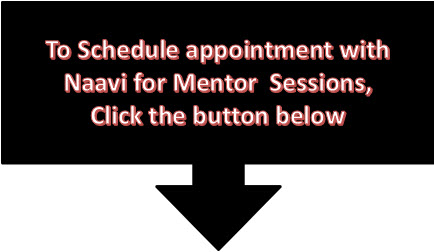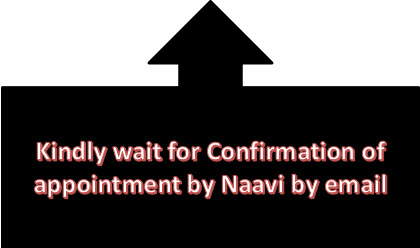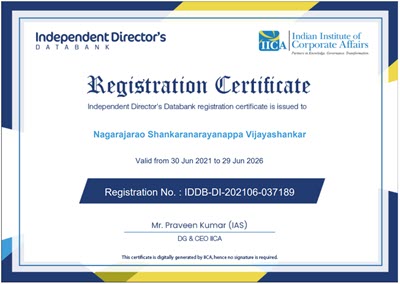On 19th January 2014, Mr Narendra Modi (NaMo) unveiled his vision as a PM designate of BJP for the 2014 Loksabha elections. Out of the various points raised by him, one was on the bringing back of the Black money stashed abroad. (Refer dna aticle).
Here is my idea of how Black money in India can be controlled with a techno-financial solution.
The undersigned had way back in 2004 floated the idea of “Digital Value Imprinted Instrument System” (DVIIS) and even made a patent application for the system. As a follow up, an operative idea termed “ZeMo” cards (Zero Memory Smart cards) was also promoted as a universal solution for citizen identity management. plastic cards management, stamp duty management etc. (Refer: concept note). One of the applications of this ZeMo cards was the issue of bar code tagged high value currency notes which could be tracked by RBI through out the life of the currency note.
The patent was not pursued due to personal reasons but the idea continues to hold promise. It has been to some extent replicated in other areas including airline ticketing, prepaid stored cards and the aadhar card system.
Recently, the increased attention which Bitcoin has received has raised the debate on a need for a “Crypto Currency Policy” for the country.
There is a possibility that RBI may be mulling over developing a comprehensive policy on Crypto Coins. However such policies need the support of the political system too if they have to be adopted without controversy.
Now that NaMo has indicated a desire to work on a policy on Black Money, I would like to request him to consider how ZeMo can be used to meet the need to bring black money into official reckoning.
One of the estimates of total black money in India is that it is of the order of 30% of GDP or around Rs 25 lakh crores. Another estimate reveals that the estimated money stashed in Swiss Banks is of the order of US$ 1.4 trillion or Rs 84 lakh crores. Some of the black money is in circulation in the Indian market particularly in the real estate industry. A huge amount is in the form of cash and circulated by politicians during election times. There is also a huge amount in the form of Gold.
(For Estimates of Black Money in India: Refer :ET-2012 article : HT Feb 2013)
Whatever be the exact estimate, it is huge and if even part of this is brought back to India and put to productive use, then there would be a huge benefit to the economy.
Hence a policy directed towards identifying and immobilizing black money is a good first step for economic revival in India. Mr NaMo’s idea of trying to bring back Swiss Bank deposits to India is therefore welcome. This was also in the BJP manifesto in the last election and is also being pushed by Baba Ramdev.
Dr Man Mohan Singh also claimed after the previous election that he would bring back black money from Swiss Banks within 100 days which however was not implemented.
We can however presume that there is a wide spread support for a move to bring back Swiss money back to India and also bring back other black money into official circulation.
One of the ancillary issues here is the fact that Pakistan printing fake currencies and putting it in circulation in India. The problem of fake currency is also important since it is common now a days to find fake currencies even in Bank ATMs.
In view of the above there is a need for a concerted effort in controlling black money.
This is however likely to affect many persons in business and some real estate owners who might have been forced into accepting black money because of the prevailing practices and high levels of taxation.
We may have to therefore look for a combination of a forced accounting of black money along with an amnesty scheme that makes the adverse impact of the measures soft.
Towards achieving this objective of making all currency in circulation accountable, I suggest use of the following system which is an idea that evolves out of the DVIIS system but is a hybrid system between DVIIS and Crypto currency systems harnessing the benefits of both.
The ZeMo System of Indian Currency Management (ZeMo-INR System)
Essence of the system:
1. The scheme would involve issuing of a new series of currency notes starting with the higher denomination of Rs 10,000, Rs 5000 and Rs 1000. (The scheme may be introduced gradually to cover Rs 500/- and Rs 100)
2. The current issue of Rs 1000 notes would be demonetized and exchanged for the new series.
3. The new series of currency notes would be issued with an embedded digital ID for each currency note that replicates the currently visible number of the currency note. Such ID could be as simple as a bar code or a QR code.
4. RBI will maintain a data base (Similar to the Crypto Currency Block Chain). New issues will be added to the block chain by RBI which will be the sole miner.
5.Verification of transactions would be enabled by all Bankers whose currency counting machines, ATM machines etc would be upgraded to read the code and add the transaction to the block chain.
6. Verification can also be done by members of the public who are authorized by RBI and also paid a commission for the services so that public would have a large number of “Authorized Currency Validators” who can confirm a man on the street whether the currency he holds is genuine or not.
In this system every transaction can be verified and reported to RBI for updation of the block chain. This should happen automatically when money is deposited in the Banks or when currency holders present the currency for validation with the authorized currency validators.
Public should be encouraged not to hold cash balance and pass it through the banking system or through an authorized currency validator system so that hey can be assured that they hold only genuine currency and not fake currency.
Currently the Crypto currency system authorizes a transaction only when it is added to the block chain. In the proposed system this pre-condition is not proposed.
However, when a currency does not get reported in a transaction, it indicates that the currency is not in circulation and is “Dormant”. Dormant currency notes can be tagged for special reporting when it comes back into circulation at some point of time. Currencies that remain dormant for a very long period can even be deactivated and red tagged for a more drastic enquiry for tracing its transactions. The deactivated currencies can also be posted in a public data base so that public can apply for re validation if they are genuine holders of the currencies.
These measures provide a complete control of each currency note to the regulator and their movements can be investigated in depth when required. Presently the Bitcoin system is managing mandatory validation of all transactions within a time span of around 10 minutes and the value of the transactions authenticated are many times in small denominations of less than Rs 1000/-. Hence if appropriate systems are in place it is technically feasible to manage the system of deferred authentication which the above system proposes.
Comments are invited.
Naavi











Sure, the ZeMo system is good to be implemented. But in this current scenario with the unwillingness and cold attitude of government in even strengthening the critical infrastructure from cyber attack, this concept is light years away.
Apart from ZeMo, i come to NaMo, whatever he may say in his hi-fi speeches, and spitting on opposition, he has hardly shown any way on how we can combat the issues that our nation faces. Just like ZeMo, the speech of NaMo and its implementation is a distant dream.(he is only a good speaker, one must know that development on paper is different than making it happen for real)
what ever political party comes to power, no one will act properly to get the black money back to our country, infact, as we may be discussing this issue, much of money might have been converted to other forms and siphoned off somewhere else.
Please note, i am not any political sympathizer, nor admirer or an oponent to any politician, no matter its BJP OR INC or any other party, the breed of politicians carry the same DNA….
I agree that secure cyber infrastructure is important not only for the ZeMo-INR but for many other things.I have therefore been proposing a separate Cyber Policy in the form of a “Charter of Demand from Netizens” which was first proposed during the last Karnataka elections, details of which are available on http://www.aifon.org.in starting with http://www.aifon.org.in/wp/?p=87. Slight changes in the charter may be required now as part of an all India policy.